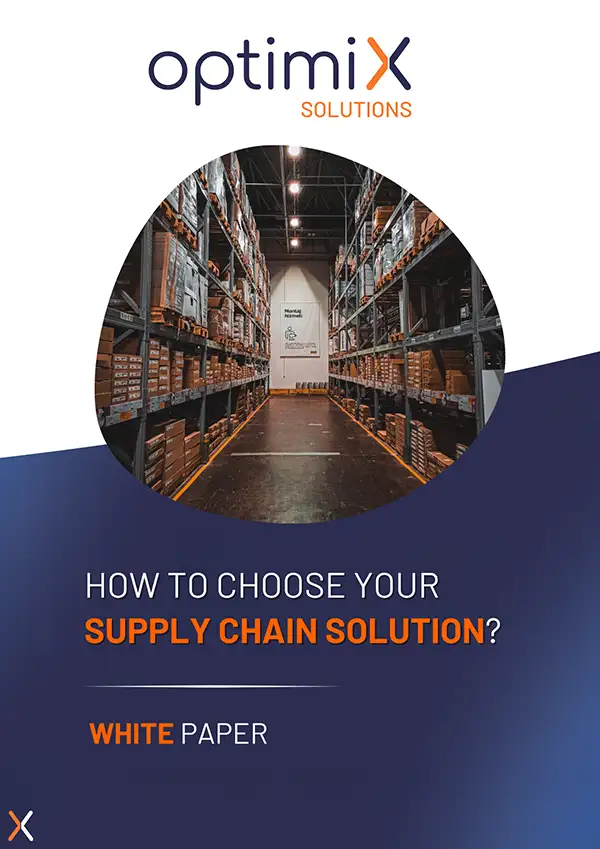Sales And Operations Planning (S&OP ) is an essential component of modern business strategy, providing companies with a structured method for synchronizing demand and supply. However, like any business strategy, S&OP presents challenges that require continuous improvement.
Here’s an overview of the 5 major challenges companies face when implementing S&OP, and how to overcome them.
Demand variability
In retail, consumer demand can vary significantly and unpredictably. Seasonal fluctuations, changing consumer trends and even external events such as weather conditions can have a major impact on sales forecasts. This underlines the importance of demand planning in the strategic process.
One of the main challenges of S&OP is to anticipate these variations in demand and adjust inventory levels and production capacity accordingly.
Forecast Optimization
A crucial aspect of S&OP in retail is optimizing forecasts as part of demand planning. Companies need to rely on historical data, market trends and predictive analysis to best anticipate future demand.
This involves using advanced technologies such as machine learning and artificial intelligence to refine forecasting models.
By investing in sophisticated analysis tools, retailers can implement effective strategies to significantly improve their ability to accurately predict fluctuations in demand, thus facilitating the management of inventory levels and production. These efforts contribute directly to financial objectives objectives.
Omnichannel integration
With the rise of e-commerce and online sales platforms, retailers must now effectively manage multiple sales channels. Sales and operation planning (S&OP) must therefore take this reality into account by integrating an omnichannel approach into operations planning.
This means synchronizing product availability across all channels, ensuring that stock is visible and accessible both online and in physical stores. Seamless integration between online and offline order management systems is essential to guarantee a consistent, frictionless customer experience. This is part of acontinuous improvement approach, in which the sales plan is regularly re-evaluated to best meet consumer expectations and optimize sales performance.
Supplier management
Another major challenge for companies in sales and operations planning (S&OP) is supplier management. Strong relationships with suppliers are essential to ensure a reliable and efficient supply of products.
This involves establishing strategic partnerships, actively monitoring supplier performance, and identifying opportunities to optimizesales and operationsplanning. By implementing robust supplier management processes, retailers can reduce product availability risks and improve product quality.
Corporate Social Responsibility (CSR)
The CSR dimension plays an increasingly important role in the planning of retail operations. Companies are increasingly required to factor environmental and social concerns into their operational decisions.
This includes responsible resource management, waste reduction, and the adoption of ethical practices throughout the supply chain. By integrating CSR initiatives into S&OP, retailers can not only enhance their reputation and brand image, but also save money through more efficient use of resources.
Assortment management
Product assortment is another major challenge for retailers. With a constantly evolving product range, it’s crucial to have the right items on offer to customers.
This involves striking a balance between product diversity to meet the varied needs of consumers, while avoiding inventory overload. The S&OP plan must therefore incorporate an effective assortment strategy to maximize sales and minimize costs.
Inventory management
Inventory management is at the heart of retail success. Too much stock can lead to additional storage and maintenance costs, while too little stock can lead to stock-outs and customer dissatisfaction.
The challenge for the S&OP process is to find the right balance between optimizing stock levels for each product and minimizing risks.
Operations Coordination
In a complex retail environment, often involving multiple sales channels such as physical stores, e-commerce and wholesale, coordination of operations becomes crucial to demand planning.
S&OP must align production, distribution and sales activities to ensure smooth supply chain execution. This requires effective communication between the various stakeholders and integration of information systems, which is essential for continuous improvement.
Adapting to Rapid Change
Finally, the world of retail is constantly evolving, with new products, emerging trends and changes in consumer behavior.
S&OP must be able to adapt quickly to these changes if it is to remain relevant and competitive in the marketplace. This requires organizational agility and flexible processes to adjust plans in real time.
In conclusion, S&OP represents a major challenge for retail players, but also an opportunity to leverage data and technology to improve operational planning and execution.
By overcoming these five key challenges, retailers can not only optimize their supply chain, but also better serve their customers and remain competitive in an ever-changing business environment.





